The 8 best forming metal for 2022
Finding the best forming metal suitable for your needs isnt easy. With hundreds of choices can distract you. Knowing whats bad and whats good can be something of a minefield. In this article, weve done the hard work for you.
1. Creative Metal Forming
Description
Two accomplished metalsmiths, both with extensive teaching careers, have joined forces to provide a comprehensive survey of the ways to form sheet metal. The 256-page text covers a huge swath, from a basic dapped disk through synclasting, anticlasting and spiculums to a raised vessel. Along the way, special attention is given to anticlastic forming and the vocabulary first introduced by their mentor, Heikki Sepp. Creative Metal Forming includes 35 detailed exercises to explain the basics and as well as advanced nuances of each category. Metalsmiths Michael Good and Nancy Linkin have each contributed demonstrations of their forming techniques.2. Sheet Metal Forming Processes and Die Design
Description
3. Sheet Metal Forming Processes: Constitutive Modelling and Numerical Simulation
Description
The concept of virtual manufacturing has been developed in order to increase the industrial performances, being one of the most ef cient ways of reducing the m- ufacturing times and improving the quality of the products. Numerical simulation of metal forming processes, as a component of the virtual manufacturing process, has a very important contribution to the reduction of the lead time. The nite element method is currently the most widely used numerical procedure for s- ulating sheet metal forming processes. The accuracy of the simulation programs used in industry is in uenced by the constitutive models and the forming limit curves models incorporated in their structure. From the above discussion, we can distinguish a very strong connection between virtual manufacturing as a general concept, ?nite element method as a numerical analysis instrument and constitutive laws,aswellas forming limit curves as a speci city of the sheet metal forming processes. Consequently, the material modeling is strategic when models of reality have to be built. The book gives a synthetic presentation of the research performed in the eld of sheet metal forming simulation during more than 20 years by the members of three international teams: the Research Centre on Sheet Metal FormingCERTETA (Technical University of Cluj-Napoca, Romania); AutoForm Company from Zrich, Switzerland and VOLVO automotive company from Sweden. The rst chapter presents an overview of different Finite Element (FE) formu- tions used for sheet metal forming simulation, now and in the past.4. Design and Development of Metal-Forming Processes and Products Aided by Finite Element Simulation (Engineering Materials and Processes)
Description
This book presents state-of-the-art research on forming processes and formed metal product development aided by the Finite Element Method (FEM). Using extensive and informative illustrations, tables and photographs, it systematically presents real-life case studies and established findings regarding various forming processes and methods aided by FEM simulation, and addresses various issues related to metal formed part design, process determination, die design and die service life analysis and prolongation, as well as product quality assurance and improvement.
Metal forming has been widely used in many industries. This traditional manufacturing process, however, has long been linked to many years of apprenticeship and skilled craftsmanship, and its conventional design and development paradigm appeared to involve more know-how and trial-and-error than in-depth scientific calculation, analysis and simulation. The design paradigm for forming processes and metal formed product development thus cannot meet the current demands for short development lead-times, low production costs and high product quality. With the advent of numerical simulation technologies, the design and development of forming processes and metal formed products are carried out with the aid of FEM simulation, allowing all the potential design spaces to be identified and evaluated, and the best design to ultimately be determined and implemented. Such a design and development paradigm aims at ensuring designing right the first time and reducing the need for trial-and-error in the workshop. This book provides postgraduates, manufacturing engineers and professionals in this field with an in-depth understanding of the design process and sufficient knowledge to support metal formed part design, forming process determination, tooling design, and product quality assurance and control via FEM simulation.
<
5. Mechanics of Sheet Metal Forming
Feature
Used Book in Good ConditionDescription
The basic theory of sheet metal forming in the automotive, appliance and aircraft industries is given. This fills a gap between the descriptive treatments in most manufacturing texts and the advanced numerical methods used in computer-aided-design systems.
The book may be used by lecturers in undergraduate courses in manufacturing; plentiful exercises and worked examples provide quantitative tutorial problems for students. A separate, but related simulation software package advertised on this page enables students to explore the limits of processes and understand the influence of different process and material variables.
Engineers in stamping plants and press shops find the book useful in understanding what happens during forming and why failures occur. The book is also used as a text for industrial short courses that have been given in many countries. Die designers and tooling engineers find the simple treatment of processes useful at the conceptual design stage and also in determining modifications needed to overcome problems indicated by detailed numerical analysis.
The original text, published 10 years ago, has been completely rewritten for this edition and newer topics such as hydroforming included. Simple equations governing plastic deformation, press forming, bending, punch stretching and deep drawing are derived and explained. The aim is to provide simple applicable methods rather than complex numerical techniques for practising engineers and for students interested in a quantitative and practical approach.
SIMPLIFIED STAMPING SIMULATION SOFTWARE "4S'
The analytical treatment in this book is used to develop simulation modules for simple cases of sheet forming such as stamping, deep drawing, bending and hydroforming. Students can investigate the influence of tooling dimensions, material properties and process variables such as friction on the outcome of operations and see from animated models how, for example, press loads develop during forming. Applications using this package greatly enhance interest in the development of theory in the book.
The website http://www.mssinternational.com provides further information and an opportunity to run some of the modules.
- Presents the fundamentals of sheet metal forming - bending, stretching, press forming, deep drawing and hydroforming
- Shows how deformation, loads and process limits can be calculated using simple equations
- Concentrates on simple, applicable methods rather than complex numerical techniques
- Contains many exercises, worked examples and solutions
- Used as a reference text in undergraduate manufacturing courses, as a required text in specialist graduate courses and as a course text for industrial short courses
- Is supported by a separate, but related simulation software package described below
6. Metal Forming, Ultimate Library on DVD, 148 Books Metalwork, Metal form, Forge, Foundry, Metallurgy, Alloys
Description
Foundry, Metallurgy, Alloys The Ultimate Metal Forming Library is the most complete collection of Metal Forming e-books on DVD that can be found anywhere on the planetary surface. With 148 books on forging, Foundry, Metallurgy, Smelting, Heat Treatment, Alloys, and Furnace, this comprehensive DVD is a must have for the metal forming enthusiast. The books on this DVD have copyright dates ranging from 1852 to 1922 so the content has endured the test of time. Here are some of the titles. 1) Forge Work - By: W.L. Ilgen 2) A Text-Book of Elementary Foundry Practice - By: W.A. Richards 3) General Foundry Practice- By: W. Roxburgh 4) A Manual of Metallurgy - By: G.H. Makins 5) An Outline of the Metallurgy of Iron & Steel - By: A. H. Sexton 6) Modern American Methods of Copper Smelting - By: E.D. Peters 7) The Practice of Copper Smelting- By: E.D.Peters 8) Alloy Steels - By: E. F. Lake 9) The Metallic Alloys: A Practical Guide for the Manufacture of all Kinds of Alloys, Amalgams, and Solders, Used By Metal-Workers - By: W. T. Brant 10) Composition and Heat Treatment of Steel - By: E. F. Lake 11) Study of the Blast Furnace - By: Harbison- Walker Refactories Co. 12) The Cupola Furnace: A Practical Treatise on the Construction and Management of Foundry Cupolas - By: Edward Kirk Plus 136 more books! Due to the limited space for my description, for a list of all the book titles please message me through Amazon! This DVD runs on all Windows and Mac computers. The e-books are in PDF format and can be read with Adobe Acrobat Reader which is probably already installed on your computer or is available as a free download. Most of the books on this DVD are both searchable and printable.7. Metal Forming: Mechanics and Metallurgy
Description
This book helps the engineer understand the principles of metal forming and analyze forming problems--both the mechanics of forming processes and how the properties of metals interact with the processes. In this third edition, an entire chapter has been devoted to forming limit diagrams and various aspects of stamping and another on other sheet forming operations. Sheet testing is covered in a separate chapter. Coverage of sheet metal properties has been expanded. Interesting end-of-chapter notes have been added throughout, as well as references. More than 200 end-of-chapter problems are also included.8. Automotive Sheet Metal Forming & Fabrication
Description
The photos in this edition are black and white.Sheet metal forming and fabrication is an essential automotive art. Creating door skins, fenders, hoods, and a myriad of other components from sheetmetal is a crucial skill for restoring many muscle cars, building custom parts for hot rods, and fabricating parts for classic or competition cars. While many specialized and expensive tools are used to form sheet metal into a functional and finished part, simple metal working hammers, dollies, anvils, and shot bags can be used to create parts with complex curves and crowns. This book shows the inclined enthusiast how to design and fabricate with inexpensive and simple tools as well as how to fabricate parts using more specialized tools, such as an English wheel.
Automotive Sheet Metal Forming & Fabrication provides the know-how for people who are working, or want to work, along the nearly endless learning curve of this craft. It instructs in most of the common processes and operations in sheet metal fabrication work. These are the basic ones that you can accomplish with some work, and with access to fairly modest tools and equipment. It focuses on how to perform most of the basic operations and tasks used in metal forming and fabrication. Of course, some of the more exotic tools, equipment, and techniques in this field also get attention in this book, but the emphasis is largely on the reliable basics of this work. This volume shows novice metal workers how to apply force and use fine judgment, and through close observation, creativity, ingenuity, and restraint, create almost any metal part.
Wire welders, metal shears and brakes, planishing hammers, and shrinker/stretchers are readily available and affordable, and therefore, metal forming is no longer the exclusive art of professional craftsmen. In turn, simple to more complex fabrication and metal forming tasks are within the reach of adept enthusiasts, and this book comprehensively explains how to accomplish these fun and satisfying tasks. Enthusiasts are shown how to work steel, aluminum, and some other metals, and how to select a metal for a particular part fabrication. This book also discusses how to determine elastic limits as well as how to shrink and expand metal, heating and annealing, and may other metal working techniques.


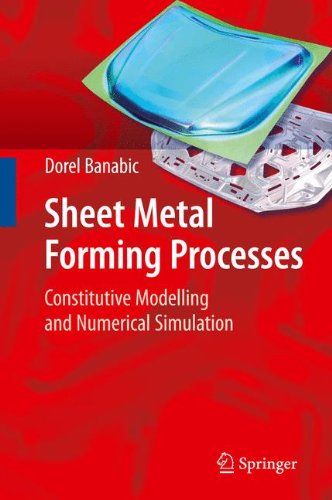
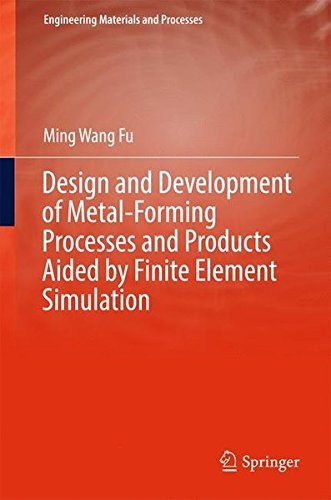
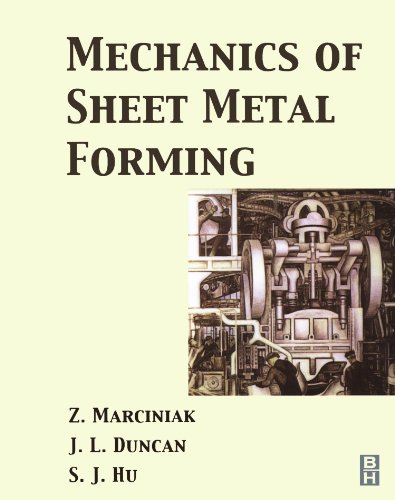
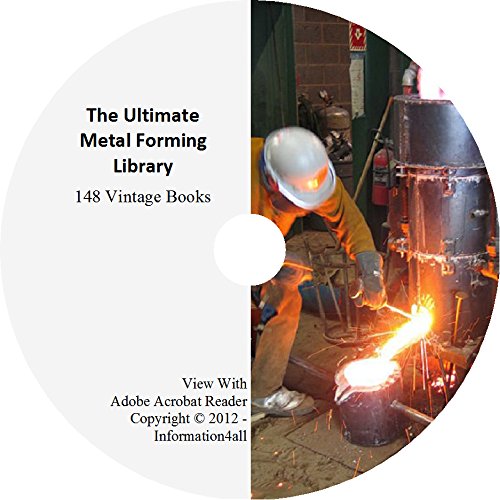
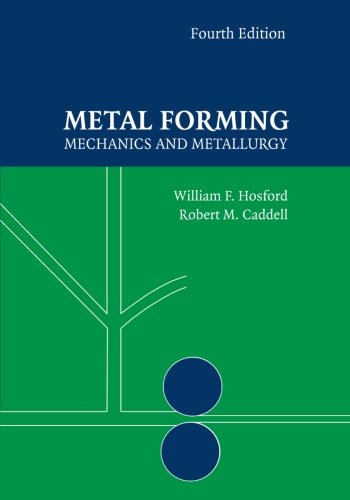




Recent Comments